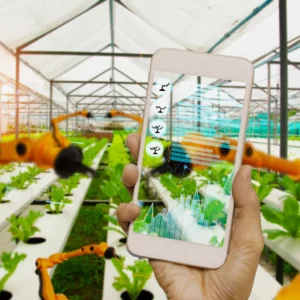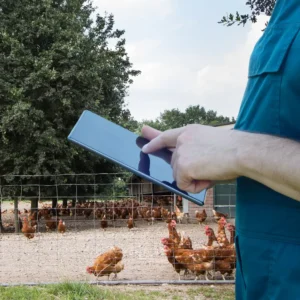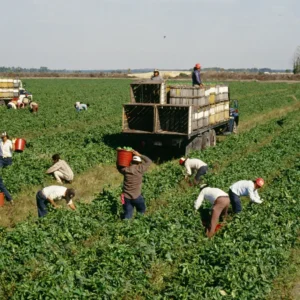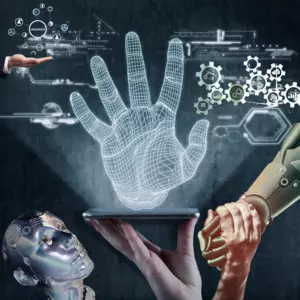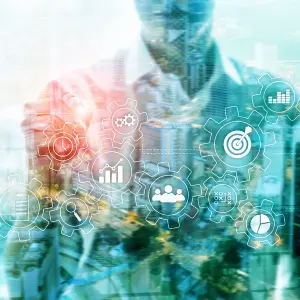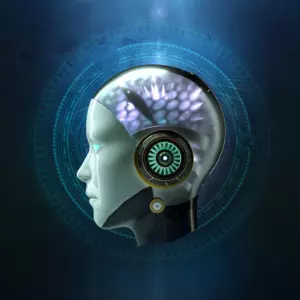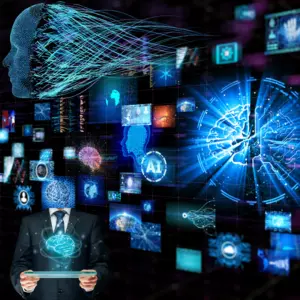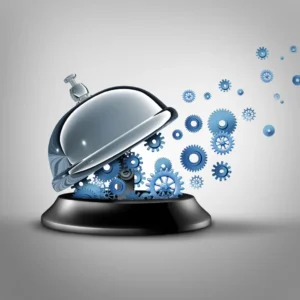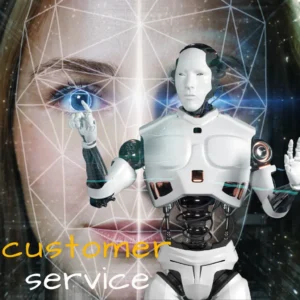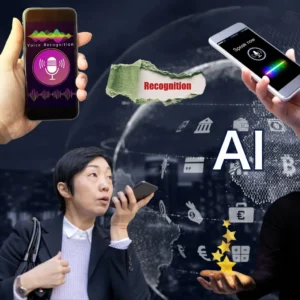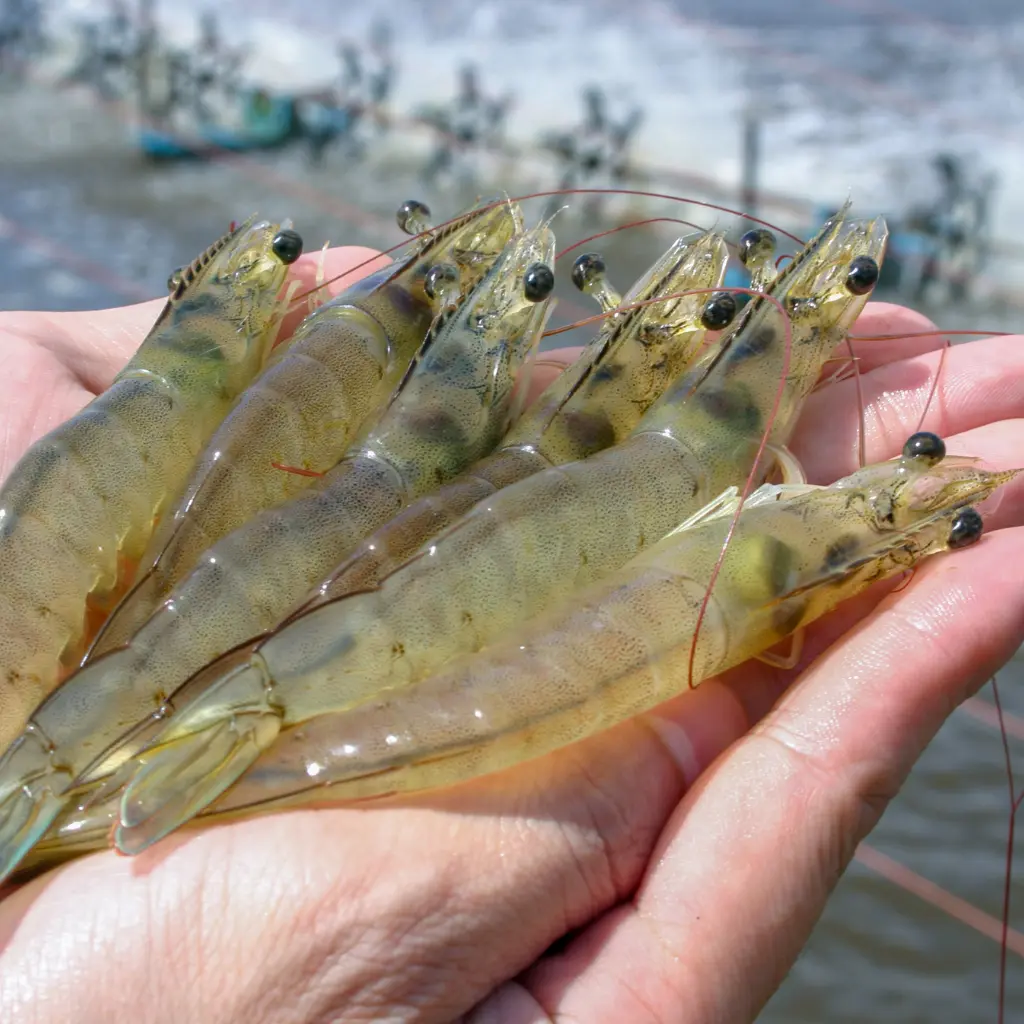
Underwater Harvest
AI in Modern Aquaculture
Welcome to the exciting world of “AI in Modern Aquaculture,” where innovation meets sustainability beneath the surface of our oceans.
This article explores artificial intelligence’s role in shaping aquaculture’s future.
From ensuring the health of aquatic species and boosting breeding programs to optimizing their diets and predicting seafood yields accurately, AI is transforming how we farm the seas. But it continues; AI also champions sustainable fishing practices, monitors real-time water environments, and streamlines aquaculture operations through chatbots.
As we delve into these topics, we’ll witness the incredible synergy between human ingenuity and AI intelligence, paving the way for a future where technology and ecology coexist harmoniously.
But the journey doesn’t end there; we’ll conclude by imagining the possibilities in a world of AI-driven fisheries and ponder the crucial question: How can we embrace these innovations while safeguarding the delicate balance of our oceans? Join us on this aquatic adventure!
Table of Contents
Ensuring Fish Health Using AI
In the realm of AI in Modern Aquaculture, safeguarding the well-being of aquatic life is paramount. AI in fish health monitoring takes centre stage, transforming the aquaculture landscape. Cutting-edge algorithms scrutinize every fin, scale, and heartbeat, ensuring that each aquatic inhabitant thrives optimally.
Machine learning algorithms work wonders by analyzing data patterns in fish behaviour and vital signs. By harnessing the power of ML for breeding in fisheries, we’re not only ensuring healthier generations but also boosting their numbers.
But what’s a healthy fish without a nutritious diet? This is where AI-driven feed optimization in aquaculture steps in, tailoring meals for each aquatic species maximizing growth while minimizing waste.
And when we talk about yields, precision is critical. We can now foresee production peaks and troughs thanks to predictive analytics in seafood yield, ensuring a consistent supply.
Yet, it’s not just about maximizing output; it’s also about preserving our aquatic ecosystems. AI emerges as a sustainability guardian, practising AI for sustainable fishing, preventing overfishing and minimizing environmental impact.
Real-time aquatic environment monitoring has become a reality, accurately tracking water quality, temperature, and oxygen levels. This data is indispensable for aquaculture management, further streamlined by AI chatbots for aquaculture management.
But amidst this progress, we must also be vigilant. AI excels in predictive analytics for aquatic disease, identifying potential outbreaks before they wreak havoc.
So, what’s next in this voyage through the depths of AI in aquaculture? Let’s dive into the exciting world of Boosting fish breeding via machine learning, where we’ll explore how AI shapes fisheries’ future with innovation and intelligence. How can it lead to even greater yields?
Boosting Fish Breeding via Machine Learning
Building on the foundation of AI’s role in aquaculture, let’s plunge deeper into the waters of innovation. We’ve secured fish health with AI, but how about their numbers? Here’s where ML for breeding in fisheries makes a splash.
Imagine an AI system that comprehends the intricate nuances of fish breeding, analyzing genetics and environmental factors. With finesse, it matches the correct pairs, optimizing the next generation. How’s that for enhancing productivity in AI in Modern Aquaculture?
Not only does AI turbocharge breeding programs, but it also factors in sustainability, a cornerstone of responsible aquaculture. It’s all about AI for sustainable fishing, cultivating species that thrive harmoniously with nature.
Now, picture this: AI algorithms scanning the aquatic world, meticulously recording breeding behaviours and trends, making each fish a piece of a data puzzle. With this treasure trove of information, aquaculturists can anticipate breeding seasons and adapt accordingly, thanks to predictive analytics in seafood yield.
But there’s more to the story. How do we ensure these future fish get the best start in life? The answer lies in optimizing their diet, a subject we’ll explore next – AI-driven feed optimization in aquaculture. How can we fine-tune their nutrition for maximum growth?
Feeding Aquatic Species Optimally
After making significant progress in breeding, it is essential to consider how we can optimize the development of our aquatic offspring for maximum AI performance in modern aquaculture. While we have already made strides in utilizing machine learning in breeding, it is now time to focus on the role of nutrition.
Imagine AI as a culinary virtuoso, concocting the perfect meals for each species. Combining data from real-time aquatic environment monitoring and fish health metrics, AI-driven feed optimization in aquaculture tailors diets to perfection. It’s like a gourmet chef crafting a bespoke menu for every fish in the sea.
This optimization extends beyond taste; it’s about efficiency, too. Waste reduction becomes paramount as AI minimizes excess food, ensuring every bite counts. The goal is to strike a balance, aligning nutritional intake with metabolic needs.
But it doesn’t stop there. AI’s predictive prowess forecasts when and how much to feed, eliminating the guesswork. Imagine a future where each fish receives its meal precisely when hunger strikes. This is where predictive analytics in seafood yield meets feeding optimization, ensuring a satisfied school and sustainability through resource management.
Yet, there’s more to explore. How do these optimized diets influence the overall yield of seafood? We’ll dive into the depths of this topic in our next exploration – Predicting seafood yields accurately. How can AI fine-tune the harvest for maximum output?
Predicting Seafood Yields Accurately
With optimized feeding strategies, we venture further into AI in Modern Aquaculture. After perfecting fish health, breeding, and nutrition, the next challenge is accurately predicting seafood yield.
Imagine a world where harvests are not a guessing game but a precise science. Here, predictive analytics in seafood yield takes centre stage. By leveraging historical data, real-time monitoring, and feeding optimization insights, AI creates a crystal-clear roadmap for future yields.
This predictive power extends beyond quantity; it encompasses quality, too. AI can foresee the exact timing for harvesting at the peak of freshness, maximizing market value. It’s like having a crystal ball for the ocean, allowing aquaculturists to plan and allocate resources efficiently.
The benefits ripple across the industry, ensuring consistent consumer supply while reducing waste and environmental impact. Moreover, it fosters a sustainable approach to aquaculture, aligning perfectly with the principles of AI’s role in sustainable fishing practices.
But how does AI achieve this level of accuracy in yield prediction, and what are the key success stories in the field? Dive deeper into this aquatic adventure to uncover the secrets behind AI-empowered aquaculture success stories. How are innovators transforming the industry, and what lies ahead in the future of fisheries with AI?
AI's Role in Sustainable Fishing Practices
As we sail through the transformative seas of AI in Modern Aquaculture, we must ponder a critical question: How does AI contribute to sustainability in fishing practices? Building on our journey through accurate seafood yield prediction, it becomes evident that AI plays a pivotal role in steering the ship towards sustainability.
Picture this: AI-powered algorithms meticulously track and analyze data on fishing activities. Combining insights from predictive analytics in seafood yield and real-time aquatic environment monitoring, AI helps ensure that fishing remains within sustainable limits. It’s about balancing the scales of supply and conservation.
Furthermore, AI acts as a guardian of marine ecosystems, identifying and mitigating the impact of human activities on aquatic life. With AI chatbots for aquaculture management, quick responses to environmental threats become possible, safeguarding our oceans and marine species.
But there’s more to explore in this underwater saga. How does AI continuously monitor water environments in real time, and what innovations are on the horizon? Our next stop is the captivating world of Monitoring water environments in real-time, where we’ll dive into the depths of aquatic data collection and preservation. How can AI help us maintain the delicate balance of life beneath the surface?
Monitoring Water Environments in Real-Time
Real-time monitoring of aquatic environments is crucial in modern aquaculture. Building upon AI’s role in sustainable fishing practices, we delve into the depths of this crucial sub-topic.
How do we ensure the delicate balance of aquatic ecosystems? The answer lies in continuous, real-time monitoring. AI-equipped sensors and devices are the sentinels of our waters, tracking parameters like temperature, oxygen levels, and pollution. This data isn’t just numbers; it’s the pulse of aquatic life.
By harnessing real-time aquatic environment monitoring, we gain invaluable insights into the health of marine ecosystems. It enables us to detect early signs of environmental stress, allowing swift intervention to protect wildlife and sustainable fishing practices.
Moreover, this wealth of data feeds into the broader ecosystem of AI-driven aquaculture. It empowers predictive analytics, aids in optimizing feeding practices, and contributes to disease prevention. The linchpin ties together the various facets of AI in Modern Aquaculture.
Yet, our journey through this underwater world isn’t over. The next stop takes us into the realm of Streamlining aquaculture with chatbots. How can AI-powered chatbots revolutionize the management of aquaculture operations? What lies ahead in our quest for more innovative and sustainable aquaculture practices?
Streamlining Aquaculture with Chatbots
As we journey through the ever-expanding realm of AI in Modern Aquaculture, we arrive at a fascinating intersection where technology meets efficiency. Building on our understanding of real-time aquatic environment monitoring, we plunge into the world of AI chatbots for aquaculture management.
Imagine having a knowledgeable aquaculture expert available 24/7, ready to answer queries and provide real-time solutions. That’s precisely what AI-powered chatbots bring to the table. They serve as virtual aquaculture assistants, enabling aquaculturists to streamline operations and tackle challenges swiftly.
These chatbots can handle many tasks, from monitoring water quality and managing feeding schedules to providing insights into breeding programs. They also assist in data analysis, helping aquaculturists make data-driven decisions for optimized yields.
But the true magic of chatbots lies in their ability to foster collaboration. They facilitate communication between aquaculture professionals, scientists, and stakeholders. They act as bridges, sharing knowledge and best practices to advance the industry further.
Yet, our voyage through AI’s impact on aquaculture still needs to be completed. The next chapter takes us into the realm of Foreseeing potential aquatic diseases. How can AI help us predict and prevent infections that can devastate marine populations? What innovations await us in this critical aspect of sustainable aquaculture?
Foreseeing Potential Aquatic Diseases
Our exploration of AI in Modern Aquaculture takes a pivotal turn as we delve into disease prevention. Building on our understanding of chatbots streamlining aquaculture, we embark on a journey to foresee and thwart potential aquatic diseases with the help of AI.
Picture a scenario where AI acts as an early warning system for aquatic diseases, akin to a sentinel guarding a fortress. AI can detect subtle anomalies that may signal the onset of disease outbreaks by continuously analyzing data from various sources, including water quality, fish behaviour, and environmental factors.
This proactive approach not only safeguards the health of aquatic species but also prevents economic losses for aquaculturists. WE CAN IMPLEMENT TIMELY INTERVENTIONS through AI’s predictive analytics for aquatic disease, from adjusting water conditions to quarantining affected populations.
Moreover, AI’s learning capabilities allow it to adapt and improve its disease prediction models. It has become a vigilant protector of aquaculture, evolving alongside emerging threats.
Yet, our aquatic journey is far from over. Our next destination unveils the innovations that are transforming aquaculture. How are AI and technology shaping the future of this industry, and what breakthroughs lie on the horizon? What possibilities await us in the ever-evolving world of aquaculture?
Innovations Transforming Aquaculture
As we journey through the captivating waters of AI in Modern Aquaculture, the path leads us to a horizon teeming with innovations. Building on our exploration of foreseeing potential aquatic diseases, we now plunge into the heart of transformations that are reshaping aquaculture as we know it.
Imagine aquaculture farms equipped with autonomous underwater vehicles (AUVs) with sensors and AI algorithms. These AUVs patrol the depths, monitoring water quality, tracking fish health, and predicting disease outbreaks. This fusion of AI and robotics is a game-changer in the quest for sustainable and efficient aquaculture.
But that’s just the beginning. AI’s foray into aquaculture also involves the development of intelligent aqua farms. These farms employ sensors, drones, and machine learning to optimize every aspect of operation, from feeding and water quality control to energy efficiency and waste management. The result? More environmentally friendly and economically viable aquaculture practices.
Furthermore, AI-driven precision aquaculture allows for highly customized and automated fish farming, reducing resource consumption while increasing yield. It’s not just about doing things better; it’s about doing them smarter.
But what lies beyond these innovations? Our next stop invites us to Imagine AI-driven fisheries of the future. How far can technology take us in reshaping the future of fisheries and aquaculture? What possibilities await us as we ride the wave of innovation?
Imagining AI-Driven Fisheries of the Future
In our voyage through AI in Modern Aquaculture, we’ve witnessed many innovations, from predictive analytics to smart aqua farms. Now, let’s embark on a final journey to explore the boundless potential of AI-driven fisheries in the future.
Picture a world where aquaculture transcends its current limitations. AI’s influence extends beyond the farm to encompass entire fisheries. Autonomous fleets of fishing vessels equipped with AI-driven systems roam the seas, guided by real-time data on fish populations, migration patterns, and environmental conditions. This smart fishing revolutionizes the industry, optimizing catch volumes while minimizing bycatch and ecological impact.
Furthermore, supply chains are seamlessly interconnected through AI, enabling real-time tracking from sea to table. Consumers can trace the origin and quality of their seafood with a simple scan, promoting transparency and sustainability.
But the question remains: how can we strike the delicate balance between technological advancement and environmental conservation in these AI-driven fisheries? How can we ensure this bright future benefits humanity and the ocean’s fragile ecosystems?
Conclusion
In our deep dive into the world of AI in Modern Aquaculture, we’ve discovered a sea of possibilities and innovations that promise a sustainable and efficient future for this vital industry. From ensuring fish health through AI monitoring to predicting seafood yields, we’ve seen how artificial intelligence revolutionizes every facet of aquaculture.
As we streamline aquaculture operations with AI chatbots, foresee potential aquatic diseases, and transform aquaculture with cutting-edge technology, we’ve glimpsed the remarkable synergy between human ingenuity and AI intelligence.
But what lies on the horizon? The answer lies in imagining AI-driven fisheries of the future. With autonomous vessels, interconnected supply chains, and a commitment to sustainability, we’re at the cusp of a new era where technology and ecology harmonize.
The critical question, however, remains: How can we embrace these innovations while safeguarding our precious aquatic ecosystems? The key to a thriving future is to strike a balance between technological advancement and environmental preservation.
As we conclude this journey, let’s not forget that the power of AI in aquaculture isn’t just about maximizing profits; it’s about securing the future of our oceans, ensuring that generations to come can savour the fruits of the sea while preserving its fragile beauty. So, what will we choose: an AI-driven future that nurtures humanity and nature or a different course? The decision, quite literally, lies in our hands.
Related Articles
- AI in Smart Agriculture – Precision Farming
- AI in Animal Farming – Tech Meets Livestock
- AI in Sustainable Agriculture – Green Gains
- AI in Agricultural Supply Chain – From Farm to Table
- AI in Agricultural Biotechnology – Bespoke Crops
- AI in Agri-Finance and Insurance – Safeguarding the Harvest
- AI in Farming Tools and Machinery – Equipped for the Future
- The AI Urban Farming Revolution – Cultivating Cities
- AI in Agricultural Automation – Robotic Revolution
- AI in Post-Harvest Care – Beyond the Harvest
- The Surge of Agri-Tech AI Platforms – Digital Farming
- AI in Combatting Crop Diseases – Healthy Harvests
- AI in Boosting Organic Farming – Natural Nurturing
- AI in Agricultural Supply Chain Management
- AI in Precision Agriculture: Farms for a Sustainable Future
- AI in Crop Forecasting and Analysis: New Agricultural Era
- The Role of AI in Agricultural Robotics: Revolutionizing Farming
- AI in Smart Greenhouses: Revolutionizing Sustainable Agriculture

Arindam Roy
An Automation Consultant with 25+ years of IT Experience
Forbes Articles related to AI usage in the Agriculture Sector:

